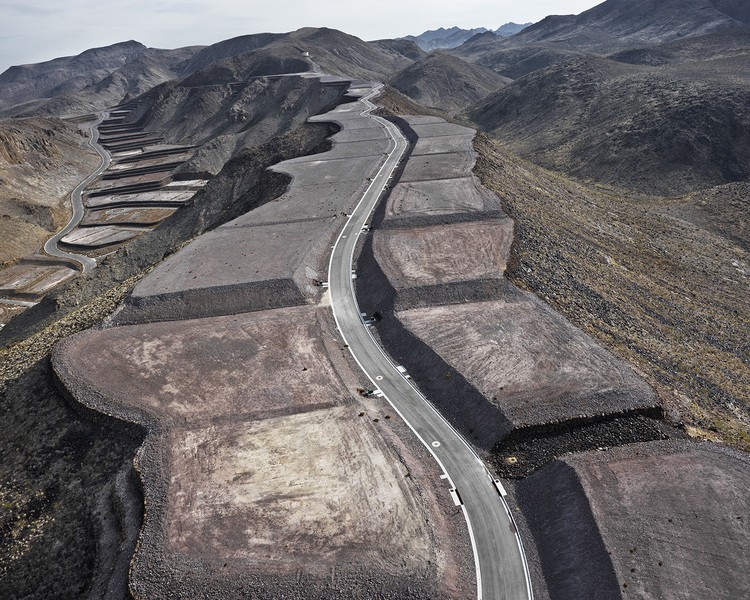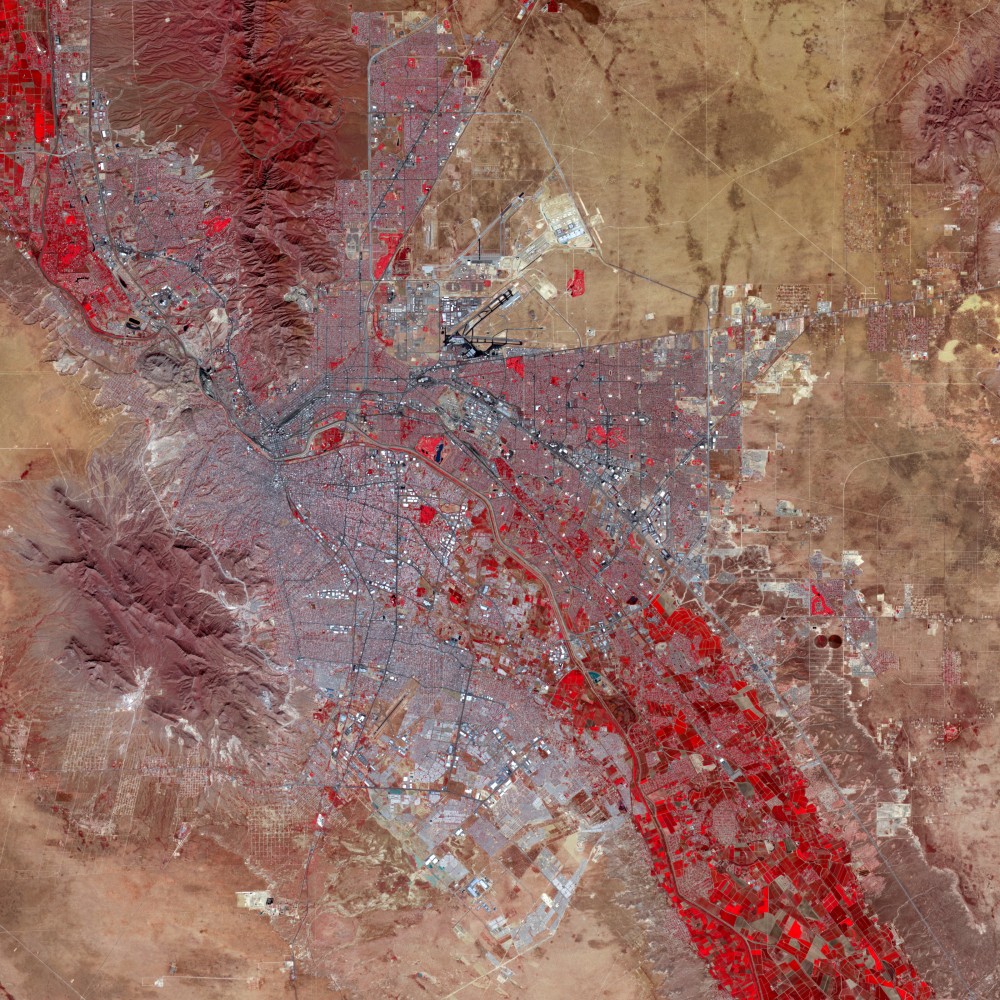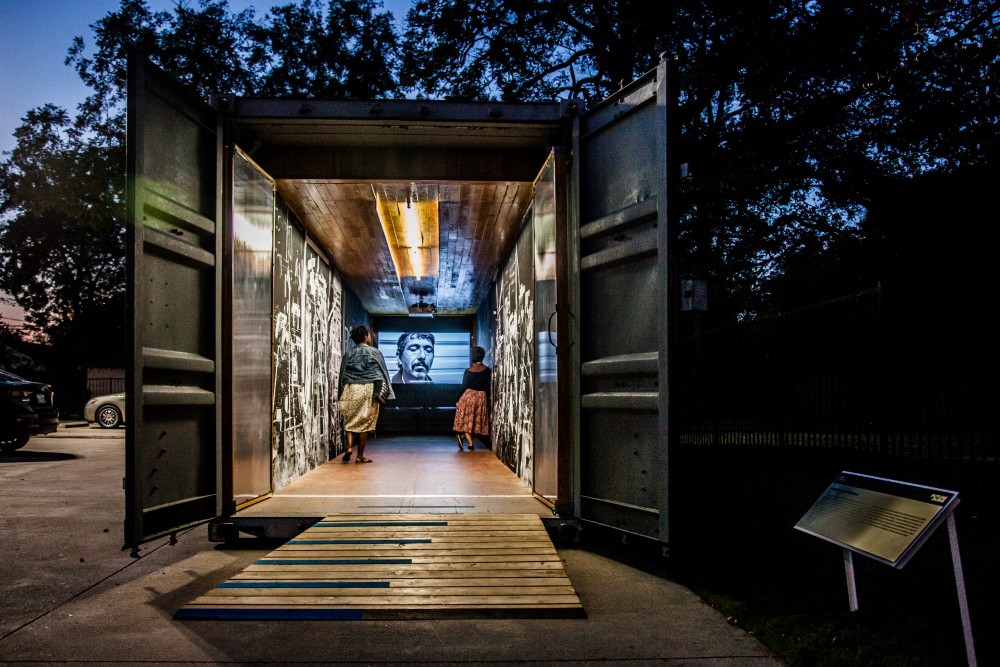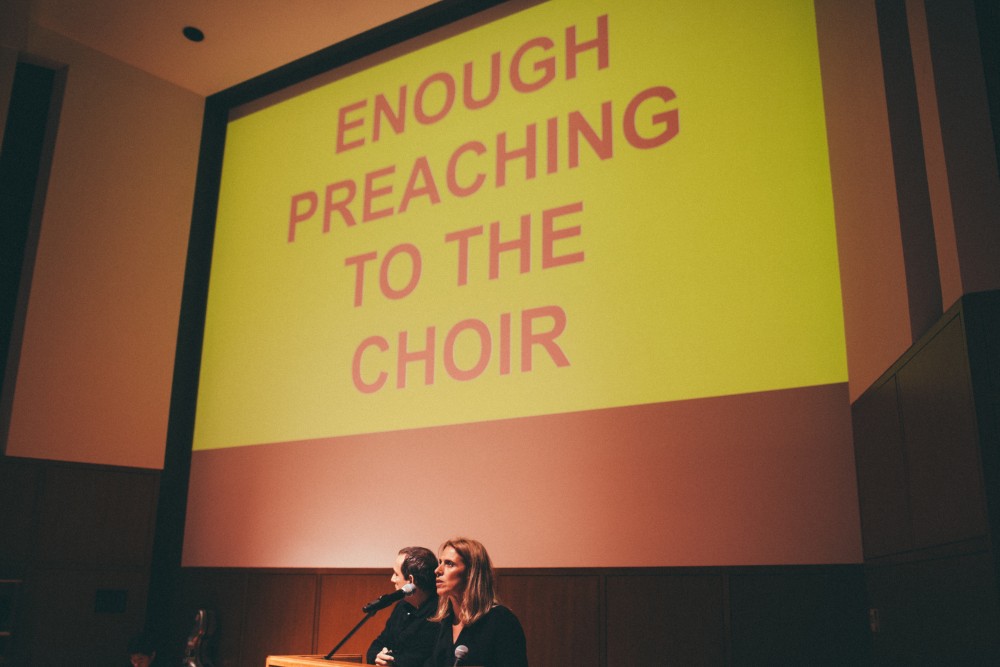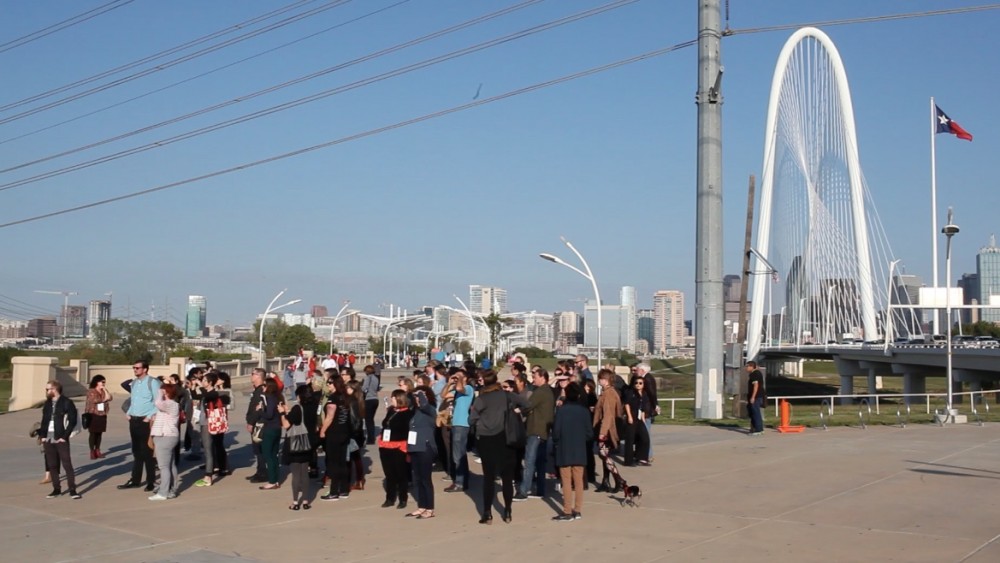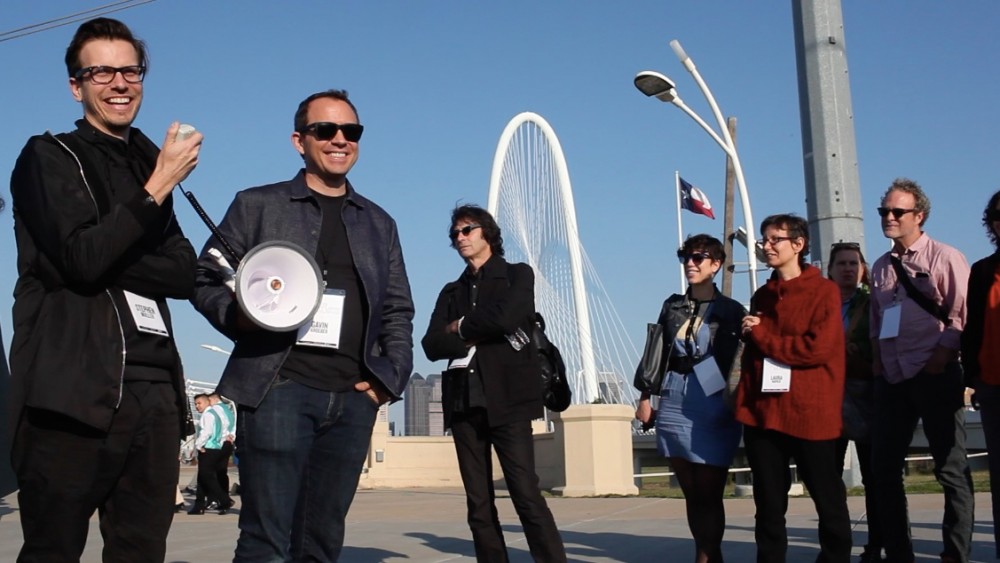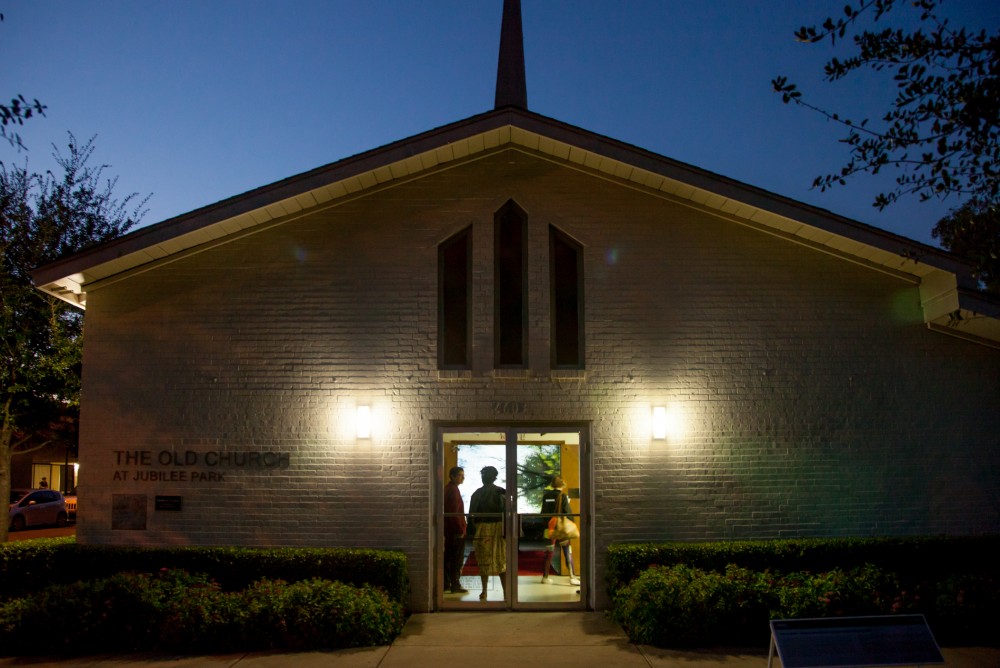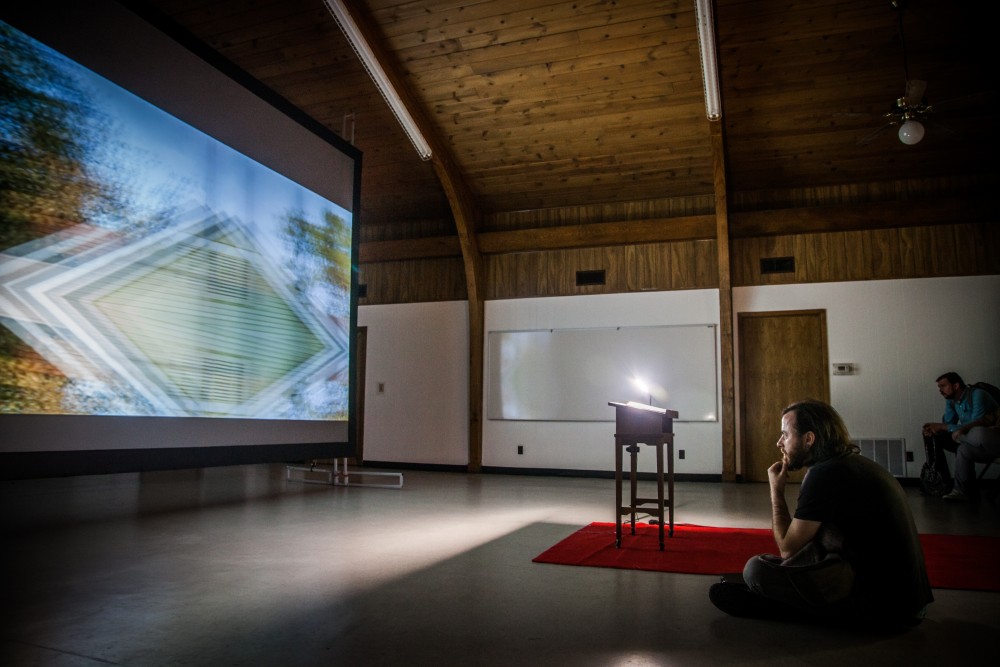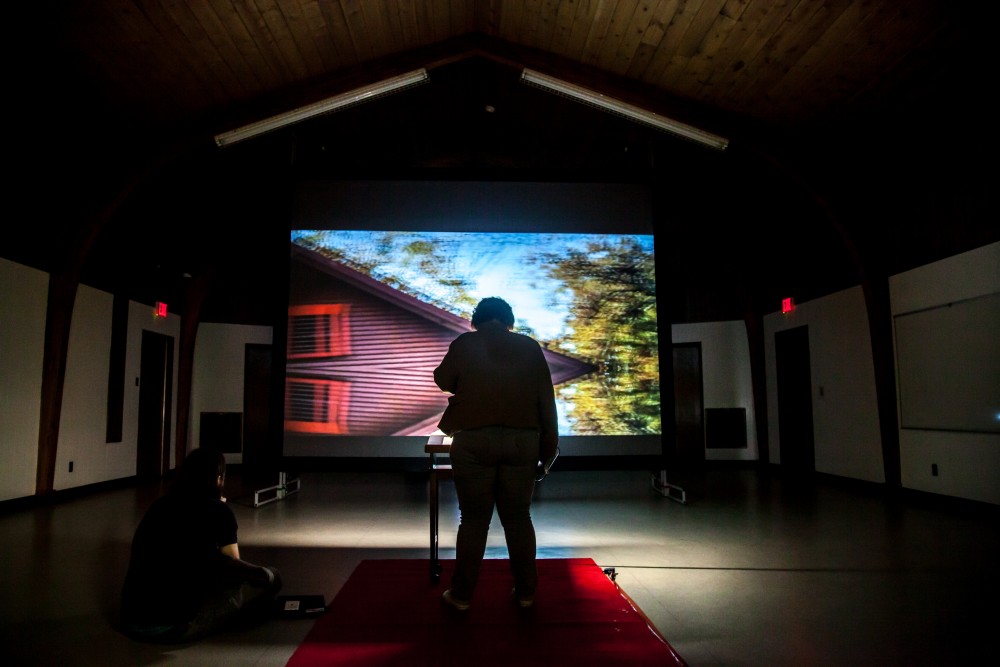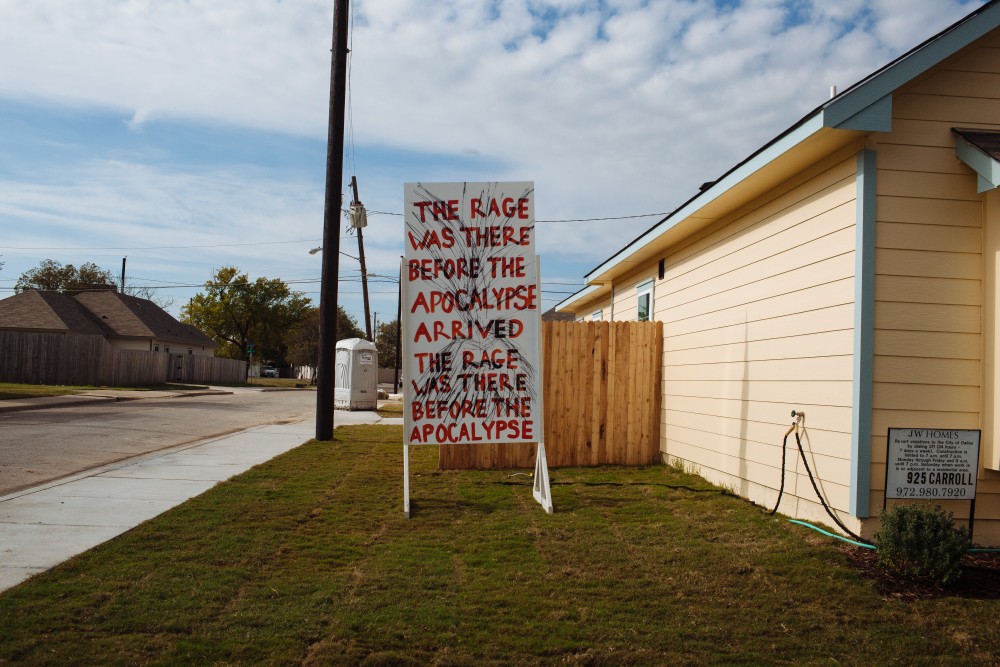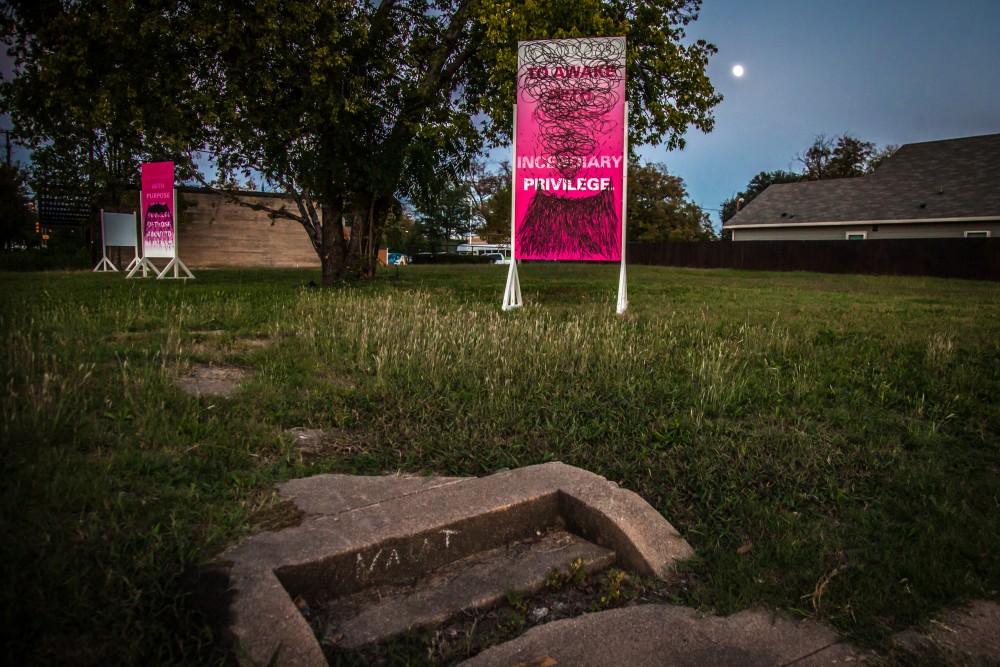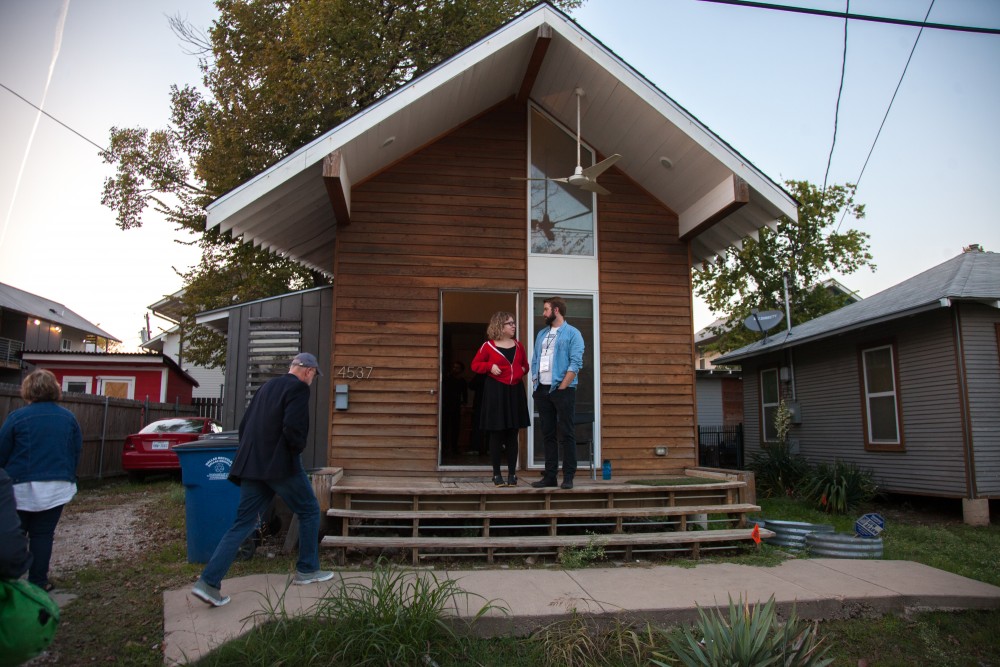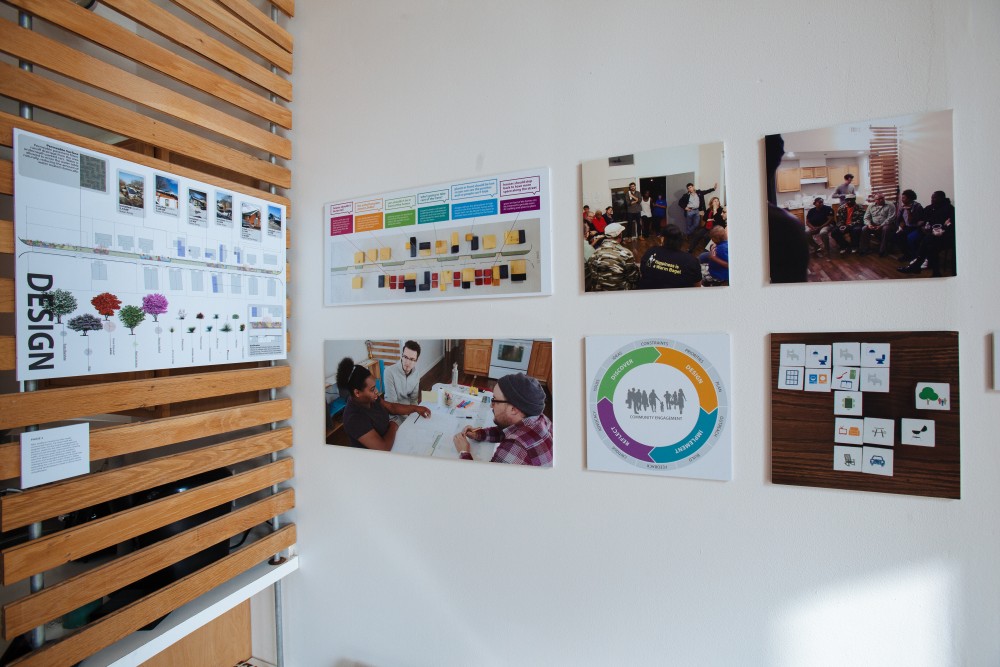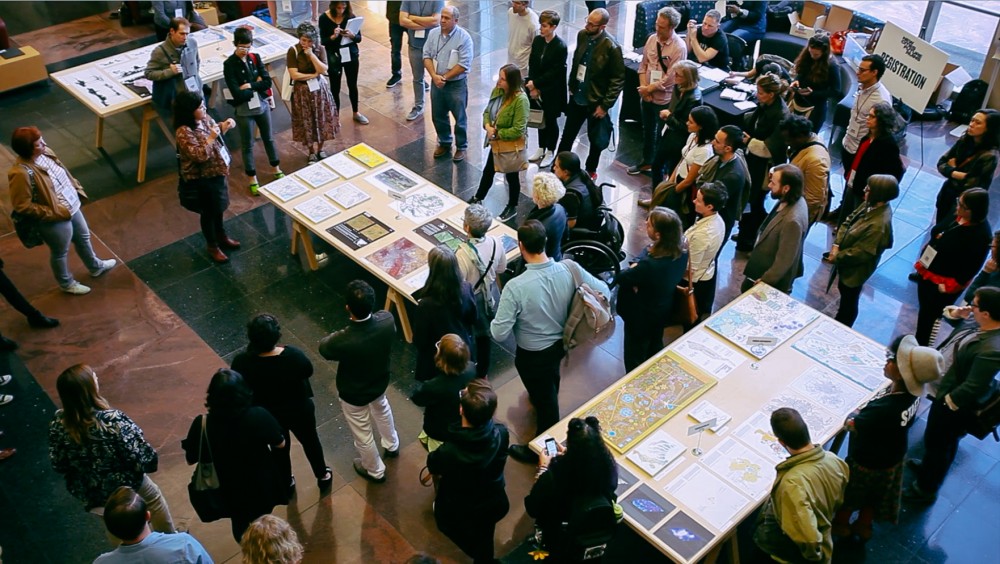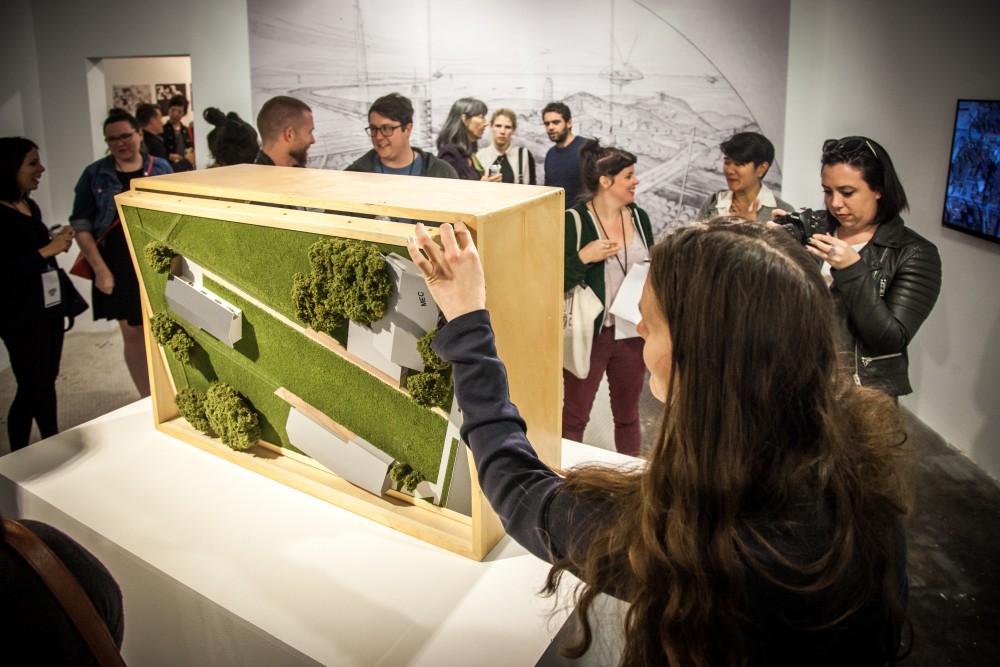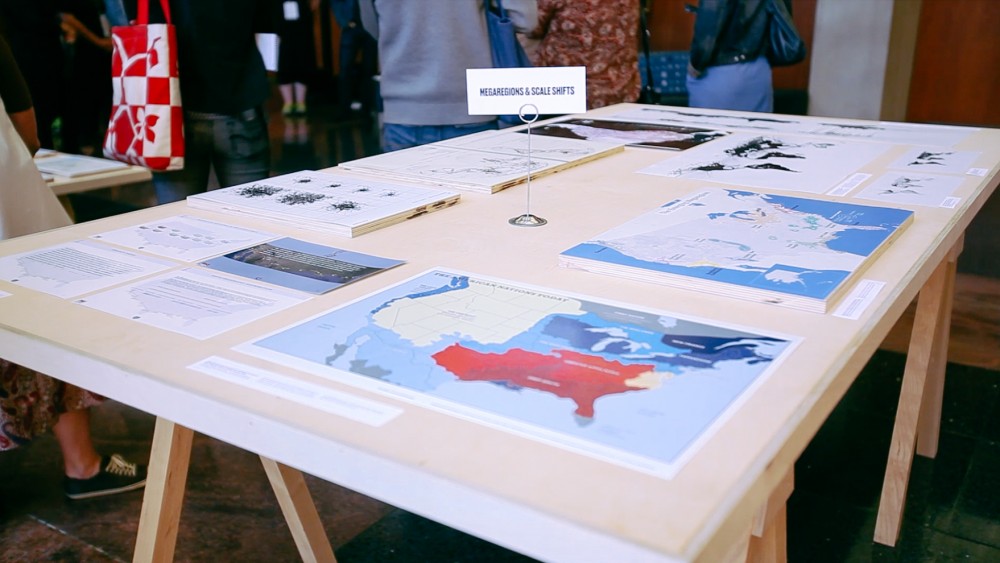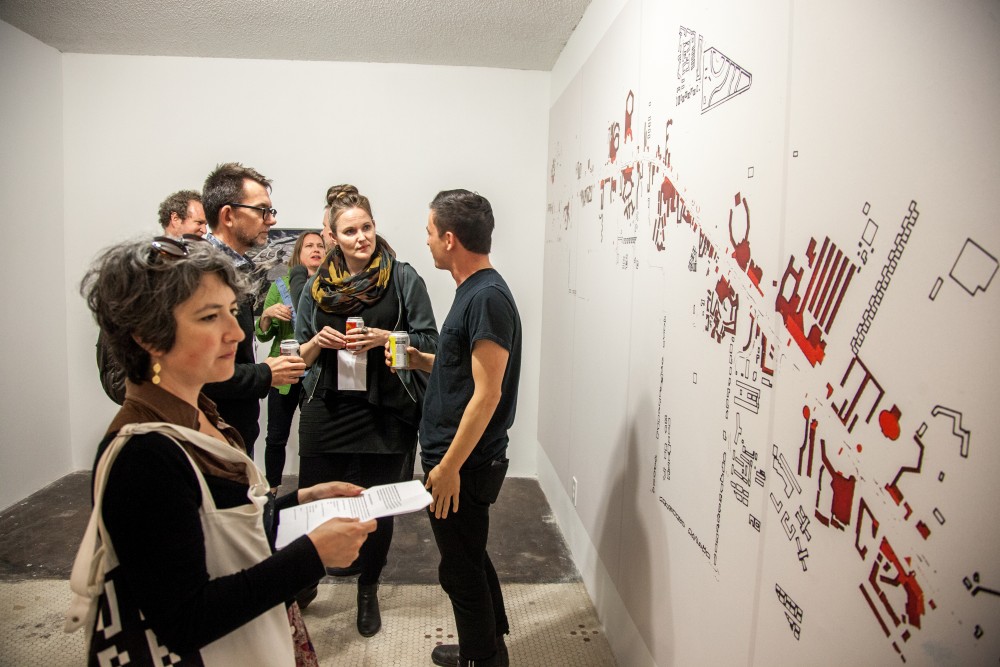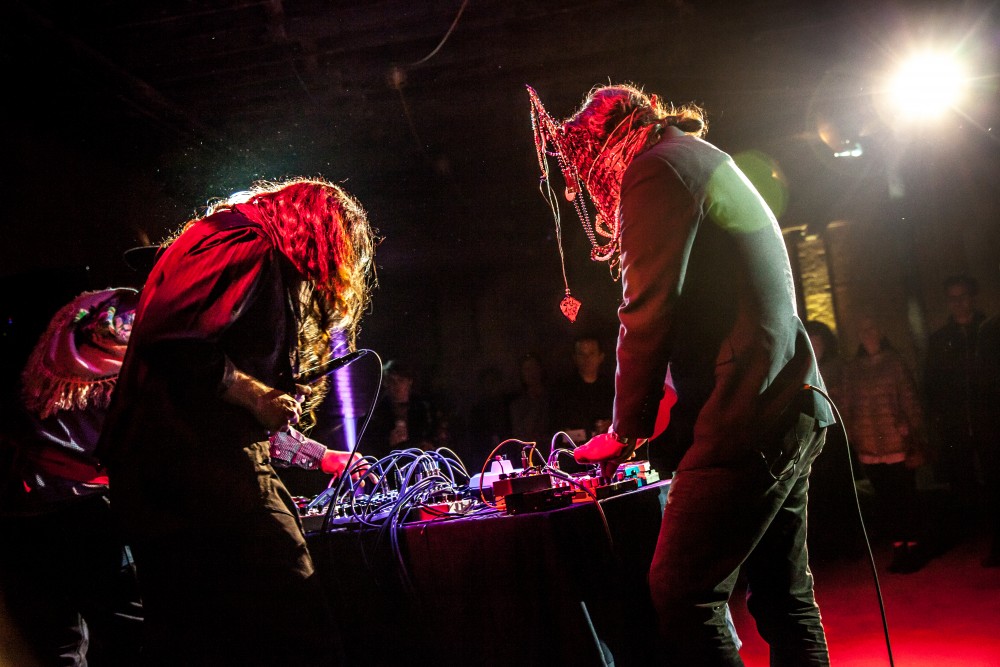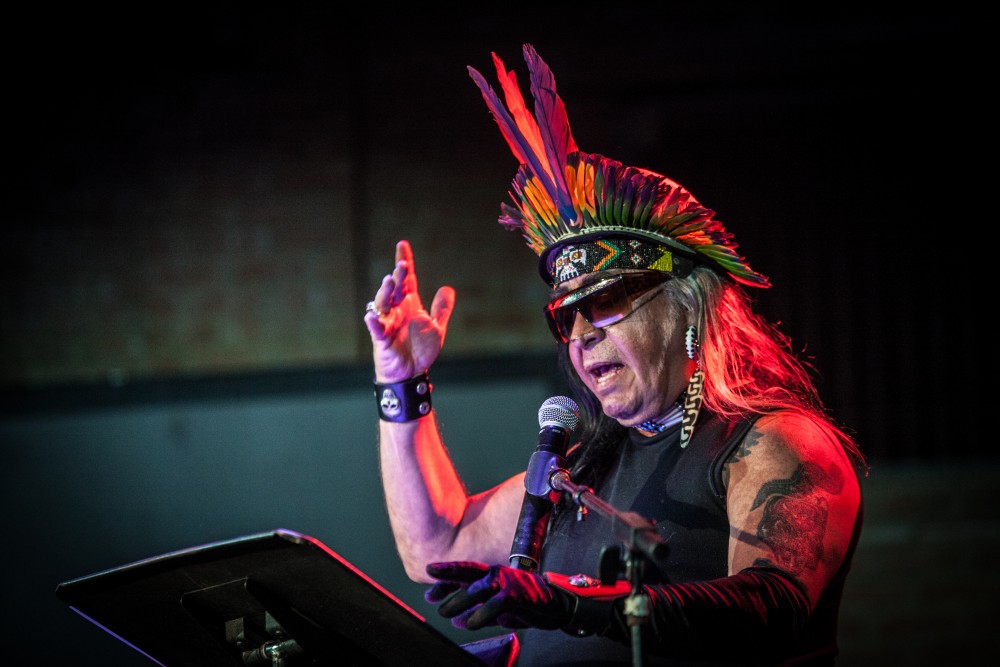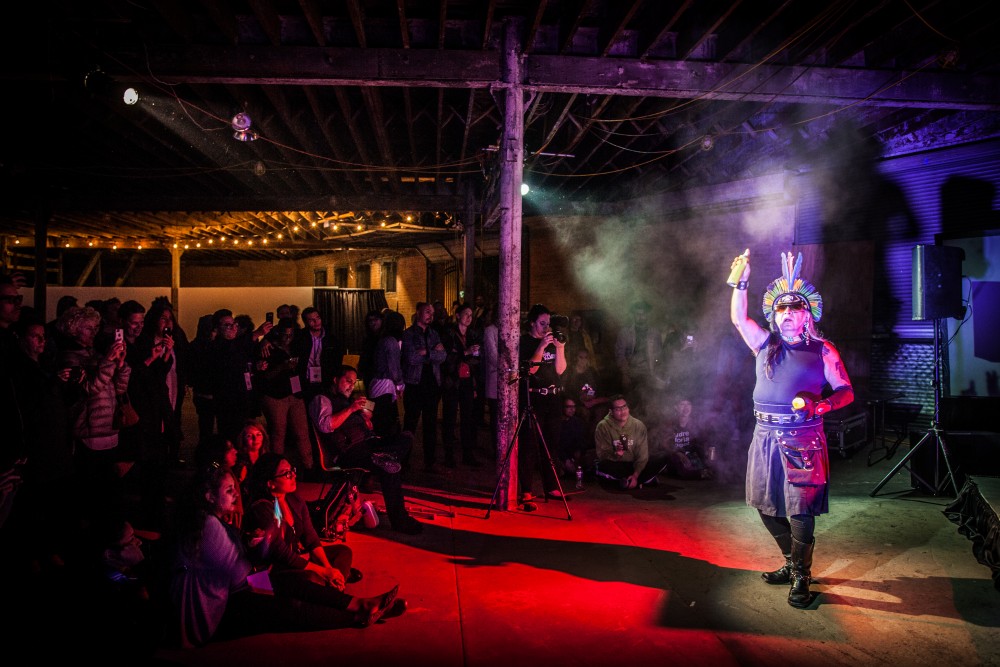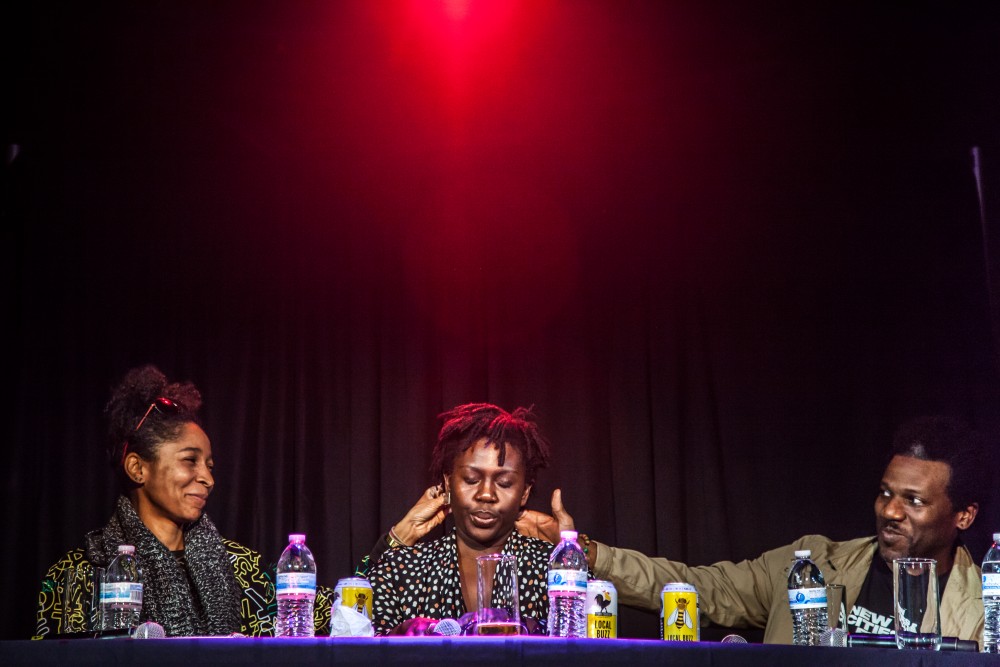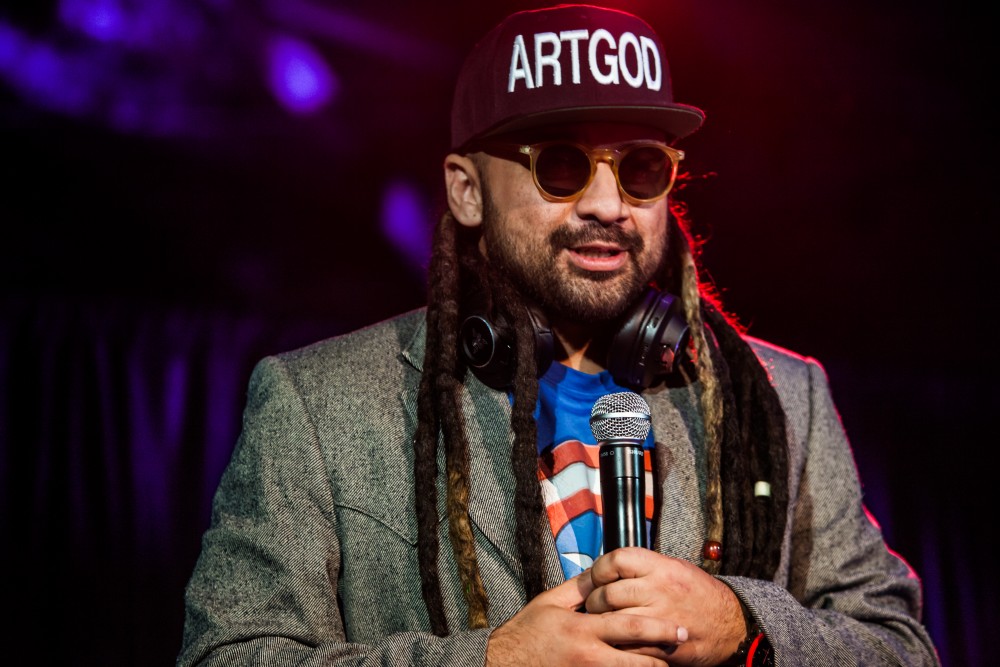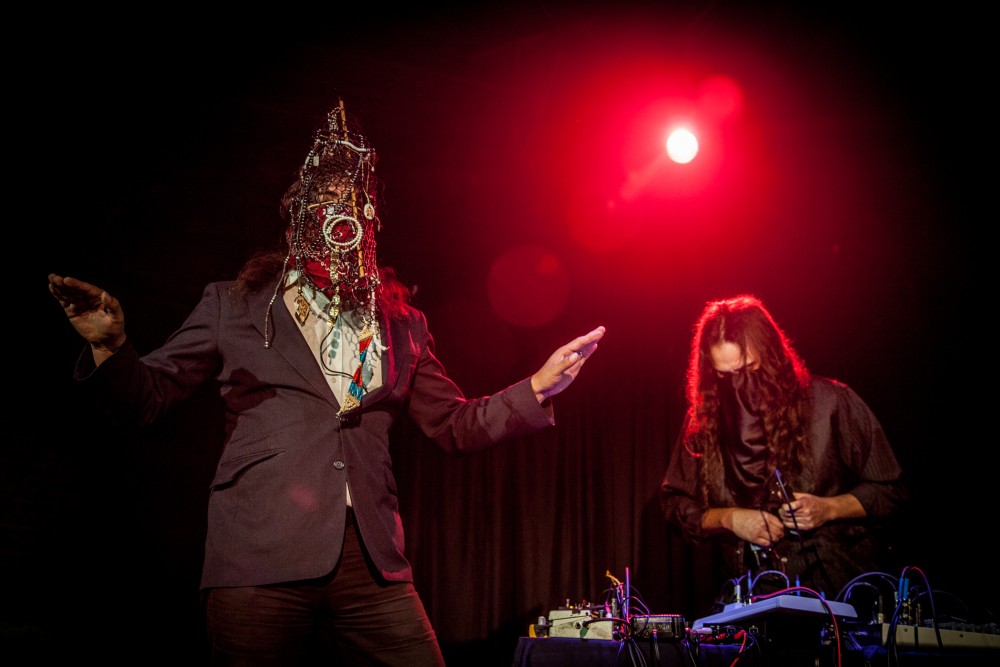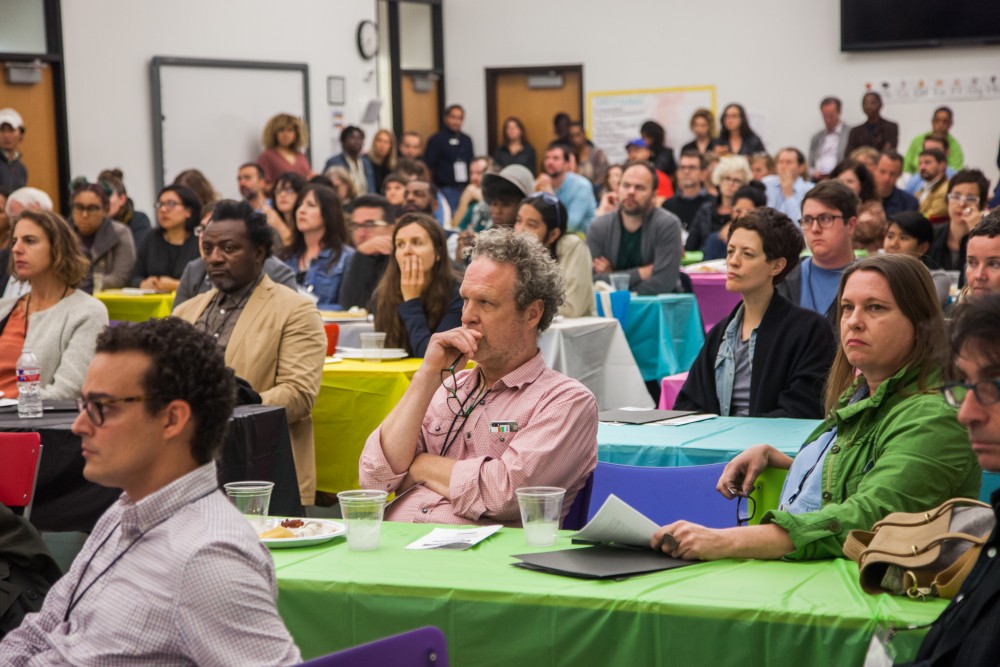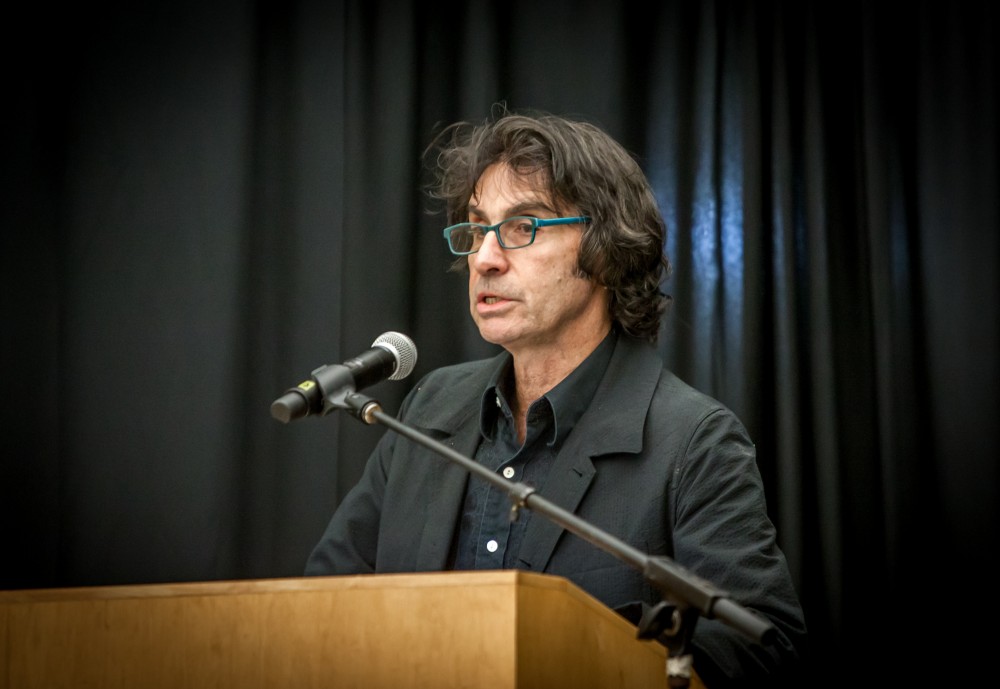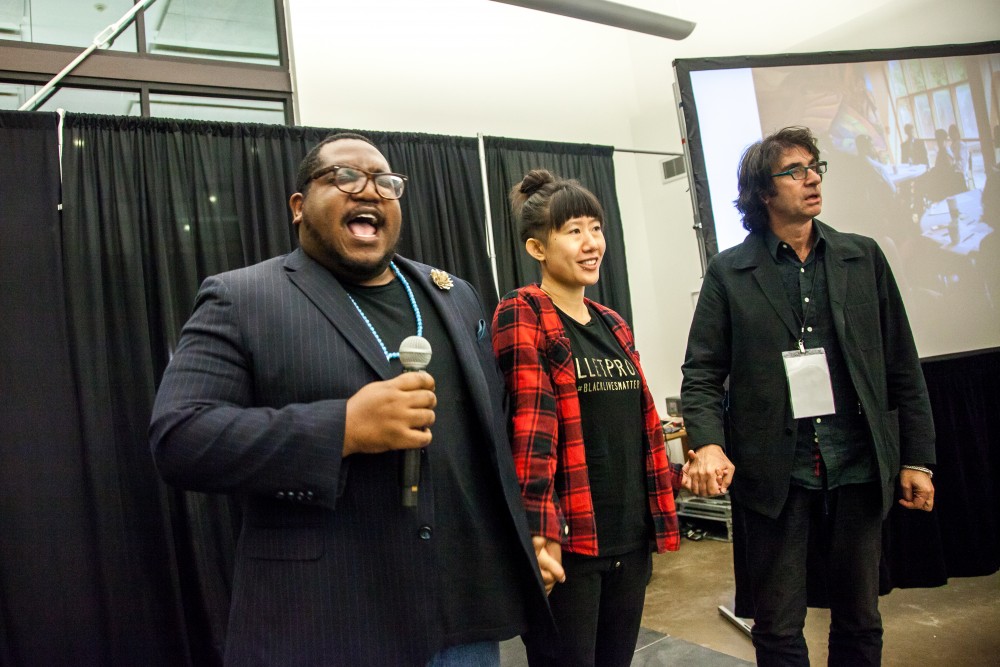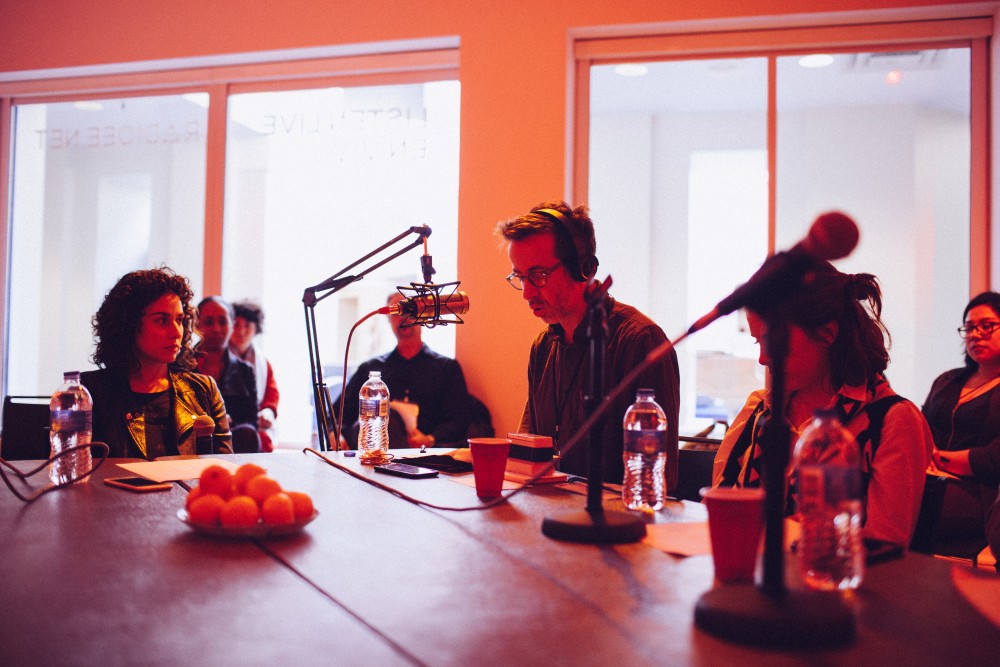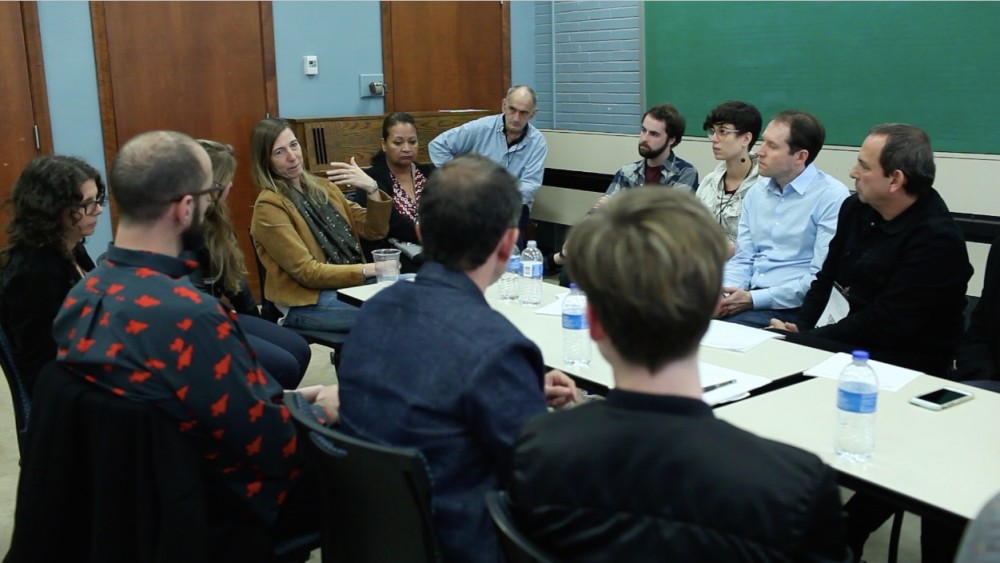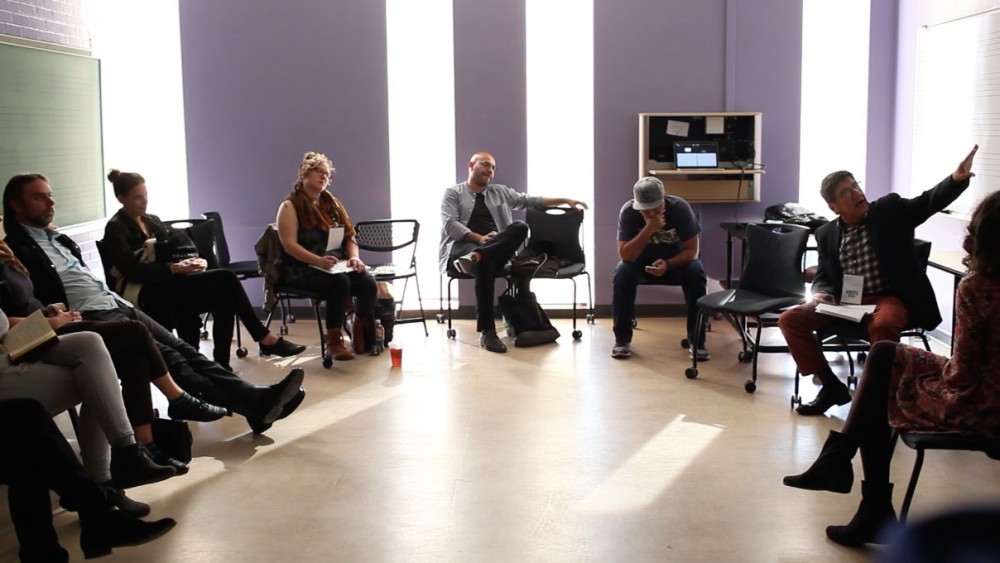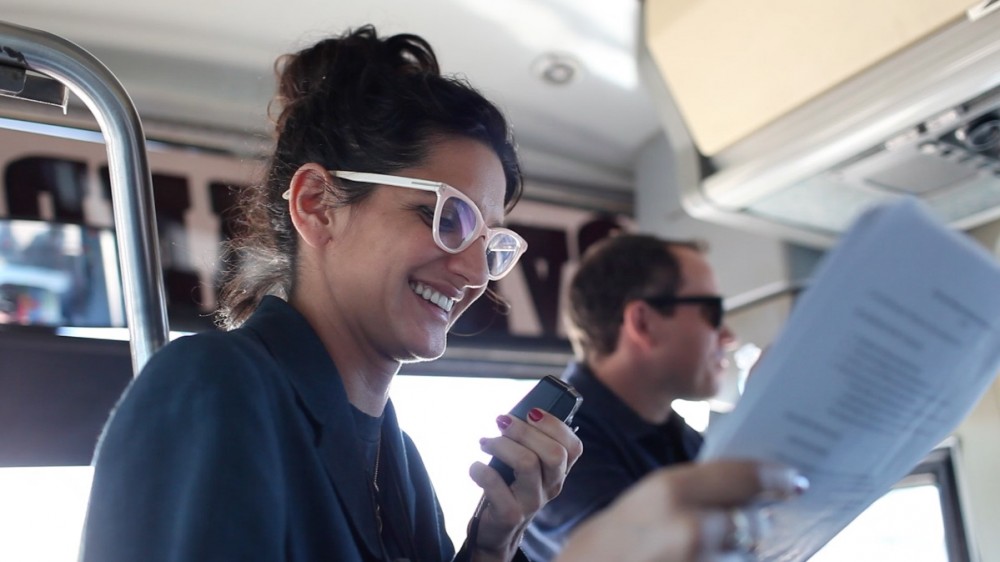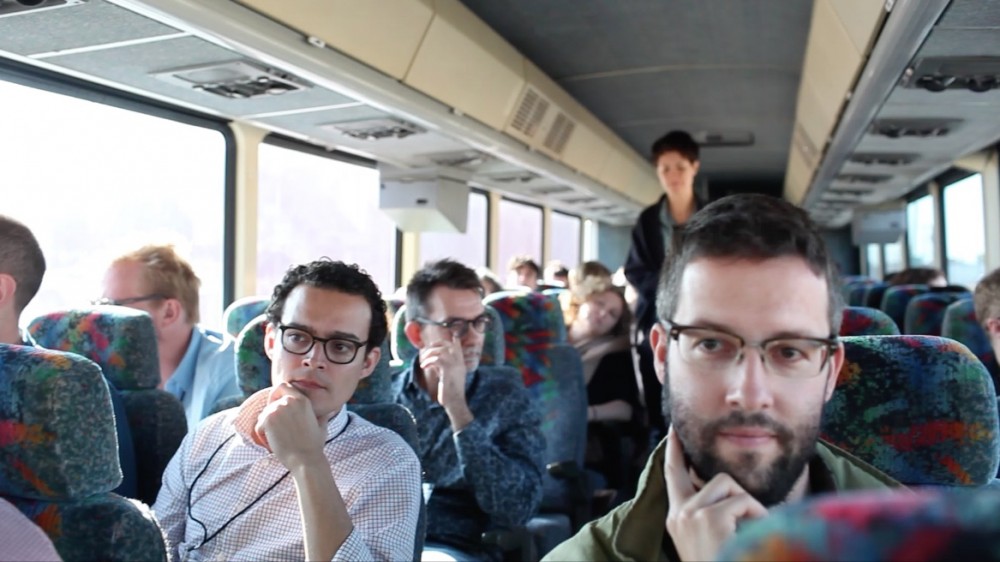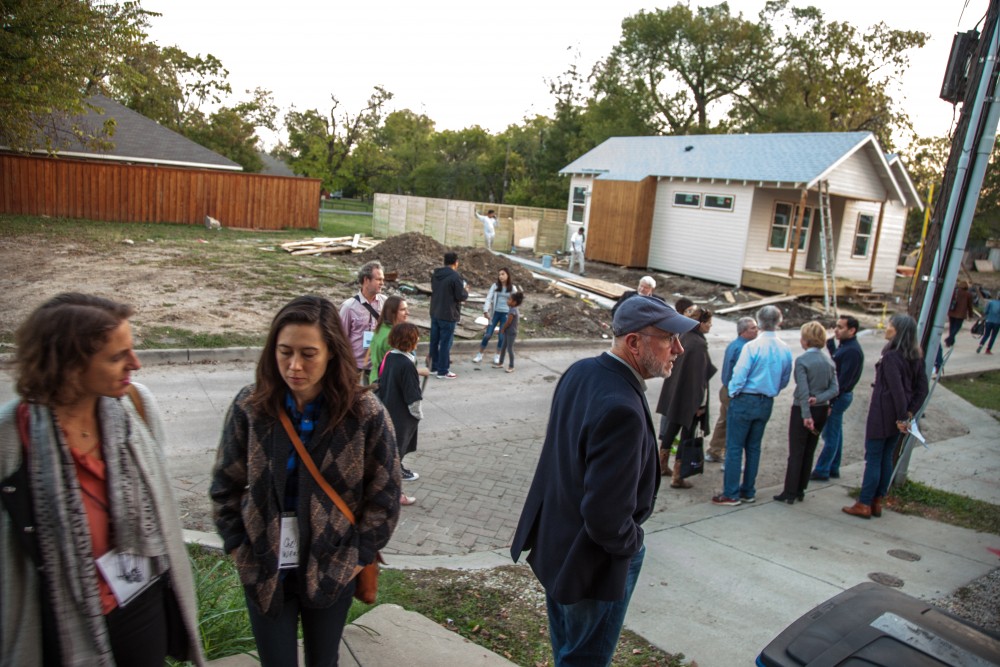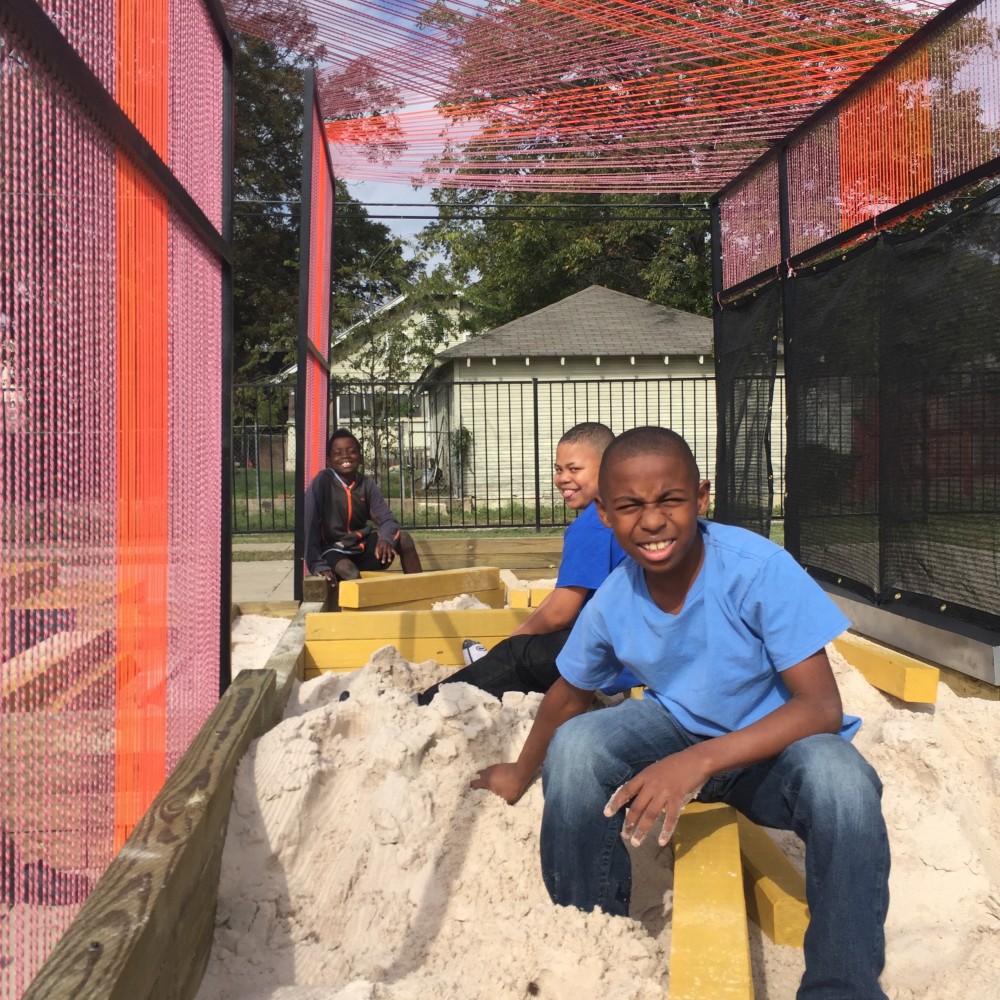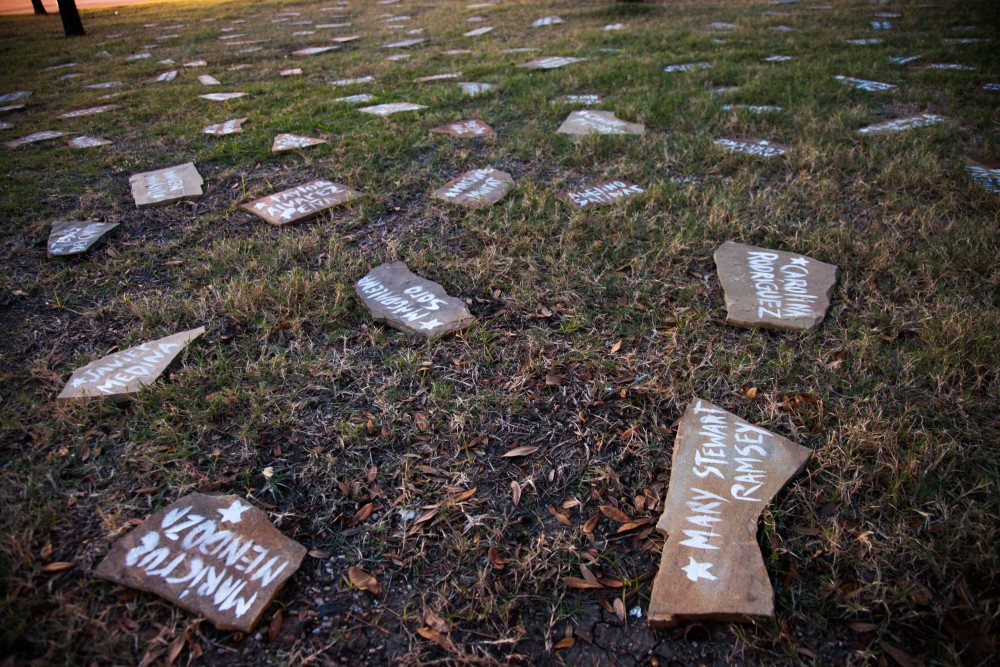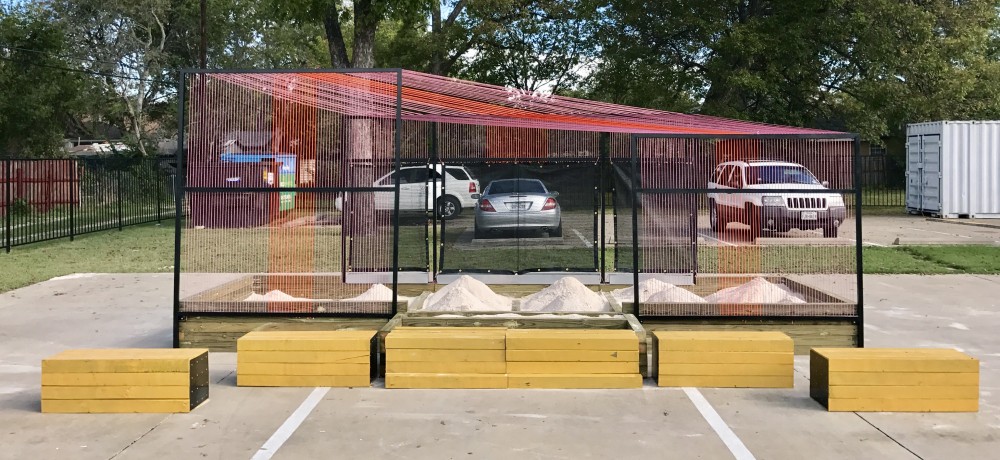New Cities, Future Ruins (2016) was a curatorial project that invited artists, architects, and scholars to investigate planetary crises of growth, migration, and sustainability in the extreme urbanism of the US Sun Belt.
Presented by the SMU Meadows School of the Arts, New Cities, Future Ruins (NCFR) was a hybrid festival-conference, featuring site-specific art and design commissions in Dallas’ Jubilee Park neighborhood and exhibitions in multiple locations, as well as a performance program, tours, panels, and talks. The Dallas convening was followed by projects in Phoenix and El Paso in 2019, organized by partners at the UTEP Rubin Center for Visual Art and ASU Gammage.
The title New Cities, Future Ruins underscored a tension between the dominant discourses of the Sun Belt imaginary—techno-utopian boosterism and apocalyptic Romanticism—and signaled an imperative for artists and designers to move beyond both while engaging these often overlooked cityscapes as sites for critical, visionary practice.
In Jubilee Park, seven temporary public projects anchored NCFR: Congo Street by bcWORKSHOP, Treatise on Imaginary Explosions Volume I by Caitlin Berrigan, Adjustable Prop by Jeff Williams, Untitled by Lais Myrrha, Poems on Various Subjects, Religious and Moral (Wheatley's Place) by lauren woods, SANDBOXING by Quilian Riano, and Hedonic Reversal by Rodrigo Valenzuela.
A response to the Western tendency to image world-ecological change through Orientalized caricatures of Asian mega-cities and Gulf urbanism, NCFR pivoted toward less exotic, North American expressions of rapid urbanization: the ostensibly quotidian but explosively expanding sprawl of the Sun Belt. Historic testing grounds for neoliberalism avant la lettre, cities like Phoenix and Houston are exploding urban centers that have become national symbols of growth, opportunity and entrepreneurialism. At the same time, they are vast agglomerations in delicate ecosystems, marked by resource overuse, dramatic demographic change, and political struggle. They are cultural landscapes that have been radically transformed by decades of dynamic expansion, sites that both particularize and illuminate global crises of rapid urbanization. In few other places is the question of whether our way of life can or should persist–environmentally, economically, and socially–rendered in such compelling and legible terms.
NCFR featured three exhibitions: New Cartographies: Visualizing Emergent Urban Forms, in the SMU Owen Fine Arts Center, was co-curated by Sofia Bastidas, Gavin Kroeber, and Jesse Zarazaga. Pushing back on dominant narratives of place, it gathered an array of recent mapping projects together under four headers: "Megaregions and Scale Shifts," "Alternate Views," "Radical Cartography," and "Visions of Dallas." Hallucinations of the Global Future: Sophia Al Maria and Cao Fei, also in the Owens Fine Arts Center, paired two video works—Al Maria’s The Future Was Desert, Parts I & II and Cao’s RMB City: A Second Life City Planning. Visionary Sprawl, at Expo Park art space BEEFHAUS, featured work by Mary Ellen Carroll, the Center for Land Use Interpretation, Michael Light, and Matt Moore, as well as archival works by Frank Lloyd Wright and Robert Venturi and Denise Scott Brown.
Suburban in texture, the Sun Belt’s political geography is a 21st-century space that resists creative traditions inherited from the industrial city. Coming into their own only after the advent of air conditioning and the influx of New Deal funding, unbeholden to any well-established historic core, these multicentric cities are defined as much by their edges as their centers. Built around subdivisions, freeways, logistics infrastructures, and special economic zones, these cities achieved an early and unadulterated form of neoliberal urbanism and provided a blueprint for contemporary spatial patterns and today’s dominant global policy regime. They demand models of intervention and speculation attuned to their particularities, and they offer possibilities for new visionary practices better attuned to global realities. Yet while the worlds of art and architecture have rushed to engage the spectacular architectural arms races escalating in the exoticized cityscapes of the Gulf states or China, the precariously parallel but unromanticized urbanism of the Sun Belt has not found space in wider discourse. These cities often seem to be mistaken for their public image: a banal succession of box stores, cul-de-sacs, and retirement communities ignored on the way out of town to land art sites and desert utopias—too new and too manicured to merit engagement.
NCFR’s performance program was presented at The MAC in the Cedars district and featured The La-a Consortium by Autumn Knight, The Roast of Dallas by Lee Escobedo (with Shelby David Meier, Randy Guthmiller, Carol Zou, Ricardo Paniagua, Lauren Belmore, and Zeke Williams), Technotopia 3.0: Notes from the “Creative City” Gone Wrong by Guillermo Goméz-Peña, and We Lost Half the Forest and the Rest Will Burn This Summer by Postcommodity.
The ostensibly anodyne landscape of the Sun Belt harbors wild images of both explosive growth and catastrophic decay. In these severe environments, amid the anxiety of recession, the national myth of boomtowns and ghost towns provides fodder for Ozymandian visions of civilizational collapse. But if it is easy to indulge in such apocalyptic speculation in the Sun Belt, this geography is dominated by an even louder strain of futurism: a celebratory techno-utopianism that envisions these new cities rising to the challenges of growth precisely by accelerating it. This attitude is predicated on a faith in market demand for solutions to foster new technologies and infrastructures just before a breaking point arrives, transforming these cities yet again. Futurisms have always shaped the cities of the Sun Belt, which existed first as promotional images mobilized by boosterist growth machines and only later as cities in any real sense. Today’s guiding futures, the equally romantic fantasies of new cities and future ruins, are insufficient: They are narratives that we must navigate around in a search for contravening forms of speculation and action, at once more grounded and more visionary.
Other programs included a keynote by cultural theorist Andrew Ross, talks and presentations by Sophia Al-Maria, Brent Brown, Mary Ellen Carrol, Naima Keith, Otherothers, Teddy Cruz and Fonna Forman, Sarah Resnick, and Imre Szeman, as well as pecha kucha presentations by Carol Zou, Carrie Schneider, Jeff Williams, Christopher Blay, and Cynthia Mulcahey.
Roundtables included “The Western Sunbelt: An Urban Paradigm?” with Elizabeth Tandy Shermer, Tony Payan, and Betsy Beasley; “Borderlands and Boundaries: Producing and Policing Civic Space” with Postcommodity, lauren woods, Teddy Cruz, Ersela Kripa, and Stephen Mueller; “The New America: Immigration, Demographic Change and Political Power” with Roberto Bedoya and Erina Duganne, , “Futurisms and Ruins: Techno-Utopianism, Romantic Apocalypse, and Ethno-Futurism” with Naima Keith, Ivan Puig, Caitlin Berrigan, and Sarah Resnick, “Remaking the New City: Community Development in the Growth Machine Metropolis” with bcWORKSHOP and Wellington “Duke” Reiter, “The Global Sunbelt: Crises of Rabid Urbanization from Dallas to Dubai” with Merve Bedir, Kerry Doyle, Jason Hilgefort, and Nada Shabout, “The Suburban Frontier: Art and Design After the Myth of Suburbia” with Mary Ellen Carroll, Teddy Cruz, Joshua Nason, and otherothers; “Urban Ecologies: Scarcity, Infrastructure, and Social Justice” with Bill Hargrove, Bryan Parras, Emily Roehl, and Imre Szeman; and “Post-Gentrification” with Aaron Landsman (held as a part of Radioee.net’s parallel exhibition in the SMU Pollock Gallery).
Held in the turbulent days immediately following Donald Trump’s election, New Cities, Future Ruins was conditioned by its charged timing. The convening took on the feel of an encampment. It became a kind of roving think tank, carving an itinerary through the city, generating and testing strategies for action—both artistic and political. NCFR moved between neighborhoods and the white cube, between public spaces, alternative art spaces, and institutional spaces, generating encounters for multiple communities of common concern, including visiting practitioners and scholars, local art and design scenes, and the (very distinct) bounded communities of SMU and Jubilee Park. The project highlighted practitioners working at Sun Belt sites and created opportunities for others to engage these spaces. It situated these endeavors in relation to projects in resonant global landscapes and within wider debates about rapid urbanization, urban imaginaries, site-specificity, and community engagement. It gathered participants across disciplines to articulate a methodological toolkit for new work in the complex spaces of Sun Belt sprawl.
Bringing critical and innovative practices from around the world to bear on this urban landscape and the global crises manifest within it, New Cities, Future Ruins was intended to foster visionary thought and artistic experimentation at these urgent sites. A vessel for exchange between artists, designers and thinkers inside the region and beyond, it was a platform to re-imagine and engage these cities—the conditions and histories that define them, the practitioners and communities working and living in them—while reciprocally mobilizing these sites in wider discourse, inspiring new approaches to parallel urbanisms globally, and challenging prevailing assumptions about which places and forms are appropriate to visionary, redirective art and design.
